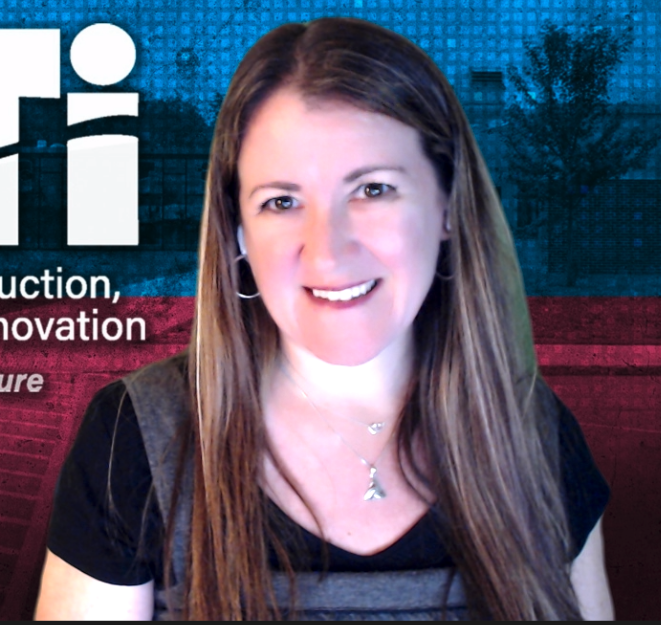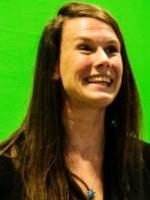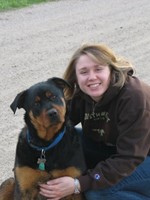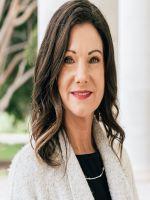





How can Interactive Virtual Learning experiences be used as a tool to achieve learning outcomes in the classroom and create a deeper connection to the learning process? Presenters will answer these questions through their collective perspectives on preparing for virtual learning experiences that reinforce standards, expose learners to diverse cultural experiences, and build connections with peer groups in distant spaces.
Participants will…
Identify the difference between using asynchronous and synchronous virtual resources as an enhancement for learning to discover how to better use them in tandem to create a more immersive learning experience.
Gain an understanding of promising practices in identifying live interactive virtual learning experiences with field experts and peer groups that engage learning groups on the appropriate grade level, discipline, and ability.
Build a stronger sense of the process of planning a live virtual visit with a cultural institution or a collaborative project to unite peer groups using synchronous distance learning hardware and software.
Leave with a planning tool that provides a guide to integrate live interactive virtual learning experiences and collaborative projects with peers for their learning groups throughout the academic year.
1. Welcome and introduction of presenters-5 minutes
2. The Process and Production of Integrating a successful Live Interactive Virtual Experience-30 minutes
a. Explore the difference between asynchronous and synchronous virtual opportunities
b. Group Discussion with audience and simulation of planning for live interactive virtual experiences using the provided Planning Tool
c. Identifying and Scheduling virtual experiences with content platforms and providers using the provided Planning Tool
d. Preparing for the experience in the classroom by preparing the classroom learning environment and the technology
e. Extending the experience after the virtual experience
3. Demonstration of a Live Virtual Field trip with the Smithsonian American Art Museum in Washington DC-10 minutes
4. Time for participants to reflect and share their ideas, standards and potential lessons that can be enhanced with virtual live experiences-10 minutes
5. Conclusion-5 minutes
American Alliance of Museums. Building the Future of Education: Museums and the Learning Ecosystem. Washington DC: 2014.
American Alliance of Museums. “Diversity, Equity, Accessibility, and Inclusion Resources.” https://www.aam-us.org/programs/resource-library/diversity-equity-accessibility-and-inclusion-resources/
Barbour, M. K.. “A history of international K-12 online and blended instruction.” in Handbook of Research on K-12 Online and Blended Learning, edited by R. Ferdig & K. Kennedy, 25-50. Pittsburgh, PA: Entertainment Technology Center Press, Carnegie
Mellon University, 2014.
Bayview Analytics. A Year Apart: Adapting Curricula for a Pandemic. Oakland, California: Bay View Analytics, 2021. https://www.bayviewanalytics.com/reports/k-12_oer_ayearapart.pdf
Bower, Matthew, Dalgarno, Barney, Kennedy, Gregor, Lee,Mark J., and Kenney, Jacqueline. Blended Synchronous Learning: A Handbook for Educators. Sydney: Office of Teaching and Learning, 2014.
Center for Interactive Learning and Collaboration. Annual Report 2017. Center for Interactive Learning and Collaboration, (2017).
Center for Interactive Learning and Collaboration. Annual Report 2020. Center for Interactive Learning and Collaboration, (2020).
M. Christine Castle, “Blending Pedagogy and Content: A New Curriculum for Museum Teachers” Journal of Museum Education,, 31.2: 123-132, DOI:https://doi.org/10.1080/10598650.2006.11510539 (2015)
Cole, C., Ray, K. and Zanetis,J. Videoconferencing for the K12 Classroom: A Program Guide (2nd Edition), International Society for Technology in Education, May, 2009.
Dillon, P. & Prosser, D. (2003). Educational Transactions in Museum Online Learning Initiatives. International Journal on E-Learning, 2(1), 14-20. Norfolk, VA: Association for the Advancement of Computing in Education (AACE). Retrieved August 26, 2021 from https://www.learntechlib.org/primary/p/17782/.
Din, H (2015) Pedagogy and Practice in Museum Online Learning, Journal of Museum Education, 40:2 102-109, DOI: 10.1179/1059865015Z.ooooooooo86
Ennes, M. “Museum-Based Distance Learning Programs: Current Practices and Future Research Opportunities,” The International Review of Research in Open and Distributed Learning, 22:2, 242-260. https://doi.org/10.19173/irrodl.v22i2.5225 (2021).
Release. Washington DC: Institute of Museum and Library Services, (2018). https://www.imls.gov/sites/default/files/museum_data_file_documentation_and_users_guide.pdf
Fullan, M., Langworthy, M., & Barber, M. (2014). A Rich Seam: How new pedagogies find deep learning. London: Pearson.
García-Escribano, Mercedes. “Low Internet Access Driving Inequality.” IMFBlog: Insights & analysis on Econmics & Finance. June29,2020. https://blogs.imf.org/2020/06/29/low-internet-access-driving-inequality/
Gaylord-Opalewski,Kasey and O’Leary, Lynda, “Defining Interactive Virtual Learning in Museum Education: A Shared Perspective,” Journal of Museum Education, 44:3, 253-263, DOI: 10.1080/10598650.2019.1625015(2019)
Greenberg, Alan D. The 2009 Update: Taking the Wraps off Videoconferencing in the U.S. Classroom: A National and State by State Analysis.” Massachusetts: Wainhouse Research, LLC., 2009.
Greenberg, Alan D. and Zanetis, Jan. The Impact of Broadcast and Streaming Video in Education. San Jose: Cisco Systems Inc., 2012.
Gruenewald, David A. “Foundation of Place: A Multidisciplinary Framework for Place-Conscious Education.” American Education Research Journal 40.3 (2003) 613-654. Print.
Hawkey, Roy. Learning with Digital Technologies in Museums, Science Centres and Galleries. 2004. hal-0019049
Hein, G.E. (1998). Learning in the Museum (1st ed.). Routledge. https://doi.org/10.4324/9780203028322
Houston, Melissa. “ Facilitating Digital Transformation for Museum education in Response to COVID-19.” New England Museum Association. Arlington, MA.2020. https://nemanet.org/files/1315/9709/5737/FACILITATING_DIGITAL_TRANSFORMATION_a.pdf
Ittelson, John. “How to assemble a relatively inexpensive, high-quality teaching station: Equipment buying ideas that can enhance your video conferencing experience.” Education Pathway. September 2020
King, Brad and Lord, Barry. Manual of Museum Learning. London: Rowman & Littlefield, 2016.
Kraybill, Anne. “Going the Distance: Online Learning and the Museum,” Journal of Museum Education, 40:2, 97-101, DOI: 10.1179/1059865015Z.00000000085 (2015)
Lindsay, Julie. The Global Educator: Leveraging Technology for Collaborative Learning & Teaching. International Society for Technology in Education, 2016. Print.
Mark K. Felton & Deanna Kuhn (2007) “How Do I Know?” The Epistemological Roots of Critical Thinking, Journal of Museum Education, 32:2, 101-110 (2007).
Mitchell, Allyson. “Virtual Visits: Museums Beaming in Live,” Journal of Museum Education, 44:3, 225-228, DOI: 10.1080/10598650.2019.1635369
Mitchell, A., Moehring, T., & Zanetis, J. (2022). Museums and Interactive Virtual Learning (1st ed.). Routledge. https://doi.org/10.4324/9781003224815
Mitchell, Allyson, Yoshida, Hitomi, and Linn, Sarah, “A Tale of Technology and Collaboration: Preparing for 21st-Century Museum Visitors,” Journal of Museum Education, 44:3, 253-263, DOI: 10.1080/10598650.2019.1625015 (2019).
National Education Association. Partnerships of 21st Century Learning. Preparing 21st Century Students for a Global Society: Educators Guide to the Four Cs. Washington, DC. 2012
O'Neill, Joseph. “6 Data-Tested Approaches to Building New Audiences.” American Alliances of Museums. July 8, 2020. https://www.aam-us.org/2020/07/08/6-data-tested-approaches-to-building-new-audiences/ .
Parry, Ross, Eikhof, Doris Ruth, Barnes, Sally-Anne & Kispeter, Erika. One by One: Building Digitally Confident Museums: Mapping the Museum Digital Skills Ecosystem. Leicester: University of Leicester, 2018. Accessed January 2019.
Picheta, Rob. “Talking on Zoom could help older people stave off dementia.” CNN. May 15, 2021. https://www.cnn.com/2021/05/15/health/elderly-zoom-dementia-pandemic-scli-scn-intl/index.html
Sanger, Erika, Silverman, Stan & Kraybill, Anne. “Developing a Model for Technology-Based Museum School Partnerships.” Journal of Museum Education 40.2 (2015) 147-158. Print.
Simon, Nina. The Participatory Museum. Santa Cruz: Museum 2.0, 2010.
Visser, Jasper and Richardson, Jim. “Digital Engagement In Culture, Heritage, and the Arts.” Creative Commons Attribution- Share Alike, 2013.
Weaver, Stephanie. "Creating Great Visitor Experiences; A Guide for Museums, Parks, Zoos, Gardens, & Libraries" California: Left Coast Press, 2007.
Wilkening Consulting, Museum Visitation Rates: Demographics of Casual Museum-Goers. (August 17, 2021), distributed by American Alliance of Museums, http://www.wilkeningconsulting.com/uploads/8/6/3/2/86329422/wlk_museum_visitor_demographic_data_story_tagged.pdf
Zanetis, Janet, “The Beginners Guide to Virtual Field Trips,” Learning and Leading with Technology, International Society for Technology in Education (ISTE), March, 2010.
Zanetis, Janet, “4 Expert Tips for Using Video in the Classroom,” EdTech magazine, December, 2015.
Zuckerman, Michael. "The Presence of the Present, the End of History." The Public Historian 22:1, 19-22. doi:10.2307/3379326. (2000).
| Related exhibitors: | Renaissance, Wakelet |